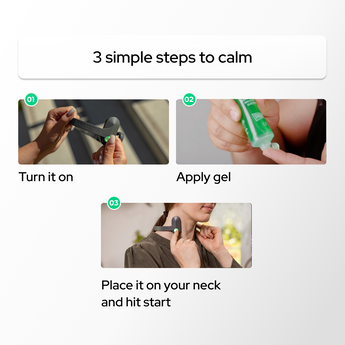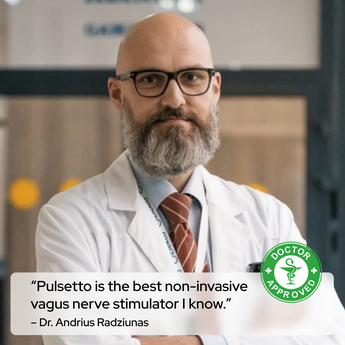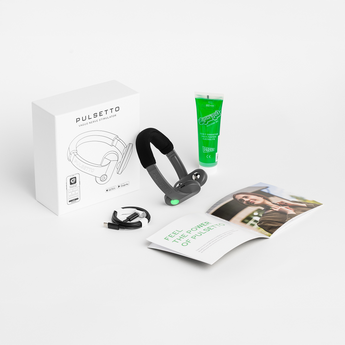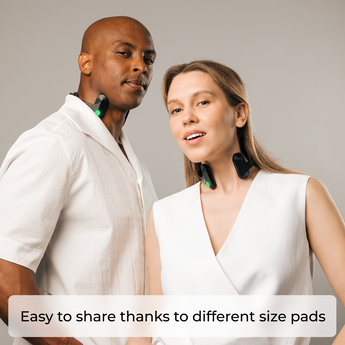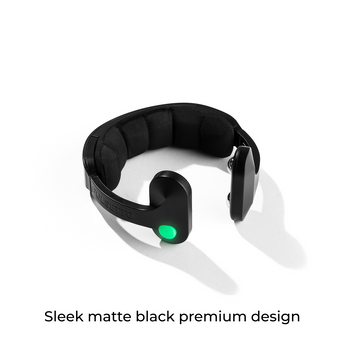The Chris Kresser Connection
Who is Chris Kresser?
Chris Kresser is a prominent figure in the fields of functional medicine and ancestral health. He is known for his work as a clinician, educator, and author, focusing on integrative approaches to health and wellness.
In 2015, he founded the Kresser Institute in Las Vegas, which trains healthcare practitioners in functional medicine. Chris also runs a popular health blog and podcast, where he discusses various health topics and often challenges mainstream medical views.

Chris Kresser is a functional medicine and ancestral nutrition blogger, podcaster, and educator.
What are His Thoughts Regarding VNS?
In an article titled "Sympathetic vs. Parasympathetic State: How Stress Affects Your Health", Chris Kresser discussed the roles of the sympathetic and parasympathetic nervous systems in regulating the body's stress response and overall health. He emphasized the distinction between the "fight or flight" response, governed by the sympathetic nervous system (SNS), and the "rest and digest" state, managed by the parasympathetic nervous system (PNS).
The key points made by Chris are as follows:
-
SNS: Activated during stress, it prepares the body for immediate action by increasing heart rate, blood pressure, and energy availability. Chronic activation of the SNS can lead to various health issues, including cardiovascular disease, insulin resistance, and weakened immunity.
-
PNS: Promotes relaxation and recovery by slowing the heart rate and enhancing digestive functions. Chris notes that a balanced interaction between the SNS and PNS is crucial for maintaining health.
-
Chronic Stress: Modern lifestyles often lead to persistent stress, which can disrupt the balance between the SNS and PNS. Symptoms of chronic stress include fatigue, sleep problems, and mood swings.
-
Health Implications: Chris links chronic sympathetic activity to several health conditions, such as obesity, depression, and gastrointestinal disorders. He highlights the importance of managing stress to prevent these issues.
- Strategies for Balance: Chris says that one measure of SNS-PNS balance is HRV, explaining that an increase in variability is a positive indicator.
Increasing HRV with a VNS Device
Increasing HRV has been found to enhance overall health by promoting a more adaptive and resilient autonomic nervous system. One effective method for improving HRV is through the use of VNS devices.
A VNS device works by stimulating the vagus nerve, which plays a crucial role in regulating the parasympathetic nervous system. This stimulation can help increase parasympathetic tone, leading to improved HRV.
Moreover, VNS devices offer convenience, as most are wearable and require little adjustment. Some devices also offer deeper levels of customization, allowing wearers to adjust the level of stimulation to their liking.
Getting Started on your VNS Device
Incorporating VNS use into your lifestyle is a proactive step towards better health. To ensure you're using your VNS device effectively, we’ve put together this mini guide to help you maximize your purchase.
Choosing the Right VNS Device
With several VNS devices available on the market, it's crucial to choose one that's safe and effective. Look for devices that have been cleared by regulatory bodies and come with strong recommendations from healthcare professionals. Quality matters, as the device needs to be precise in delivering the electrical impulses to your vagus nerve.

Pulsetto’s wearable device offers a convenient way to improve HRV.
Preparing for Your First VNS Session
Before you begin, find a quiet space where you can relax without interruptions. Ensure your VNS device is fully charged and ready to use. Wear comfortable clothing, especially around the area where the device will be placed. It's also a good idea to have a glass of water nearby, as hydration can aid in conductivity.
Next, read through the instruction manual of your device thoroughly. Familiarize yourself with its functions and safety features. Some devices may require you to apply a conductive gel or a damp cloth at the point of contact to improve conductivity.
Finally, take a few moments to center yourself with some deep breathing exercises. This not only helps to relax your body but also primes your nervous system for the VNS session.
Now, you're ready to begin. With the right preparation, your VNS sessions can become a seamless part of your daily routine.
Monitoring Progress: Tracking Changes in HRV
Now that you're actively using VNS, it's important to monitor your progress. By measuring the changes in your HRV, you can gain insights into how your nervous system is responding to the VNS therapy.
There are several easy-to-use tools available to help you measure your HRV:
-
Wearable devices like fitness trackers and smartwatches often come with built-in HRV monitoring.
-
Smartphone apps dedicated to HRV measurement, which can be used with a compatible chest strap or fingertip sensor.
-
Specialized HRV sensors that connect to your phone or computer, providing detailed analysis and feedback.
Try Pulsetto Today
If you're in the market for a VNS device that you can literally wear and forget, we urge you to give Pulsetto a try.
For just four minutes of your time each day, you can radically improve your HRV and enjoy the benefits of reduced stress, improved sleep, and lower anxiety—and the device itself is one of the most affordable options on the market at only $269.
Get a Pulsetto VNS device today.
Frequently Asked Questions (FAQ)
What Is Heart Rate Variability (HRV) and Why Does It Matter?
Heart rate variability, or HRV, is the measure of the variation in time between each heartbeat. This variation is not random; rather, it's a sign that our body is responsive and can adapt to changes and stress. High HRV is generally associated with good cardiovascular fitness and a strong, resilient nervous system.
Monitoring your HRV can give you insights into how your body is coping with stress and how well your recovery strategies, like VNS, are working.
Can VNS Help with Anxiety and Stress?
Yes, VNS can be a valuable tool in managing anxiety and stress. The vagus nerve is a critical part of the parasympathetic nervous system, which helps our bodies relax and recover from stress. VNS can promote relaxation and calmness, leading to reduced anxiety and stress levels.
How Long Does It Take to See Results from VNS?
The time it takes to see results from VNS can vary from person to person. Some might notice changes within a few weeks, while for others, it may take a couple of months of consistent use. It's important to remember that VNS is not a quick fix; it's a tool that can contribute to long-term improvements in your health and well-being.
Is VNS Safe for Everyone?
While VNS is generally considered safe, it's not suitable for everyone. Individuals with certain medical conditions, such as those with cardiac pacemakers, may not be candidates for VNS. It's always best to consult with a healthcare professional before starting any new treatment, including VNS.
How Does Pulsetto Compare to Other VNS Devices?
Pulsetto stands out due to its user-friendly design and commitment to quality. However, the best device for you will depend on your specific needs and preferences. Do your research and choose a device that aligns with your health goals and lifestyle.







